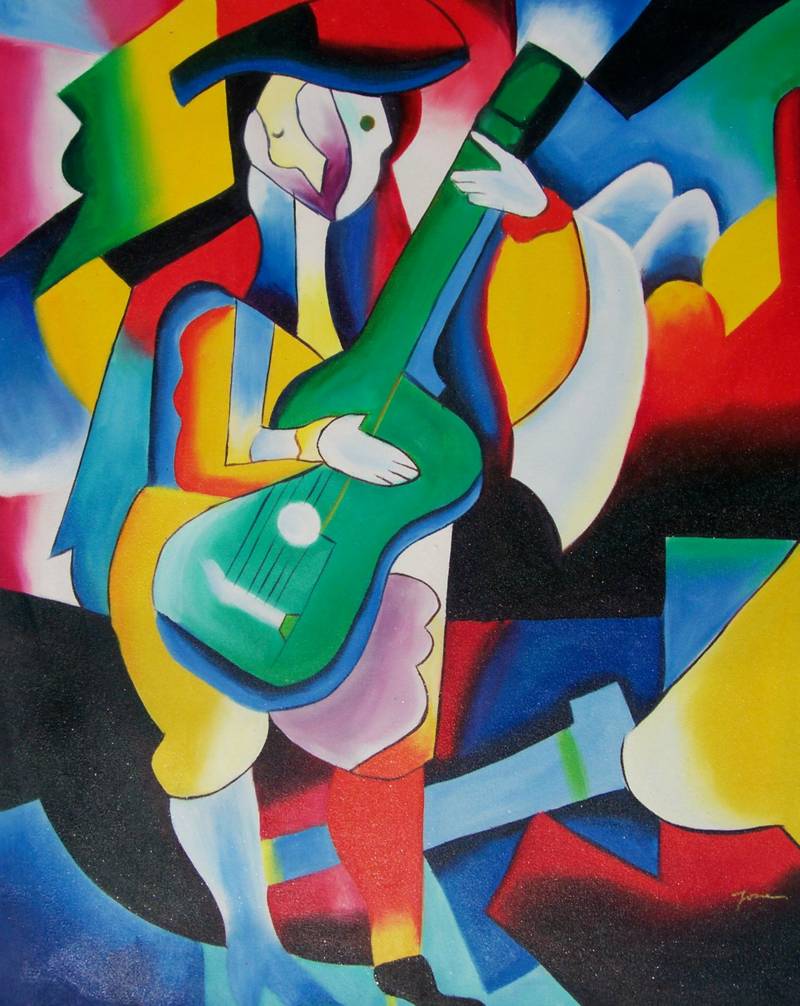

The subject matter of nude women was not in itself unusual, but the fact that Picasso painted the women as prostitutes in aggressively sexual postures was novel. This painting was shocking even to Picasso's closest artist friends both for its content and its execution. Oil on canvas - The Metropolitan Museum of Art, New York It was only some time later, and without the model in front of him, that he completed the head. After approaching it in various ways, abandoning each attempt, one day he painted it out altogether, declaring "I can't see you any longer when I look," and soon abandoned the picture. Stein claimed that she sat for the artist some ninety times, and although that may be an exaggeration, Picasso certainly wrestled long and hard with painting her head.
PICASSO AND CUBISM SERIES
One can almost sense Picasso's increased interest in depicting a human face as a series of flat planes.

In contrast to the flat appearance of the figures and objects in some of the Blue and Rose period works, the forms in this portrait seem almost sculpted, and indeed they were influenced by the artist's discovery of archaic Iberian sculpture. This portrait, in which Stein is wearing her favorite brown velvet coat, was made just a year before Les Demoiselles d'Avignon, and marks an important stage in his evolving style. Gertrude Stein was an author, close friend, and even supporter of Picasso, and was integral to his growth as an artist. As he matured he became only more conscious of assuring his legacy, and his late work is characterized by a frank dialogue with Old Masters such as Ingres, Velazquez, Goya, and Rembrandt.

His encounter with Surrealism, although never transforming his work entirely, encouraged not only the soft forms and tender eroticism of portraits of his mistress Marie-Therese Walter, but also the starkly angular imagery of Guernica (1937), the century's most famous anti-war painting.Picasso had an eclectic attitude to style, and although, at any one time, his work was usually characterized by a single dominant approach, he often moved interchangeably between different styles - sometimes even in the same artwork.This too would prove hugely influential for decades to come. Picasso's immersion in Cubism also eventually led him to the invention of collage, in which he abandoned the idea of the picture as a window on objects in the world, and began to conceive of it merely as an arrangement of signs that used different, sometimes metaphorical means, to refer to those objects.These innovations would have far-reaching consequences for practically all of modern art, revolutionizing attitudes to the depiction of form in space. It was a confluence of influences - from Paul Cézanne and Henri Rousseau, to archaic and tribal art - that encouraged Picasso to lend his figures more structure and ultimately set him on the path towards Cubism, in which he deconstructed the conventions of perspective that had dominated painting since the Renaissance.


 0 kommentar(er)
0 kommentar(er)
